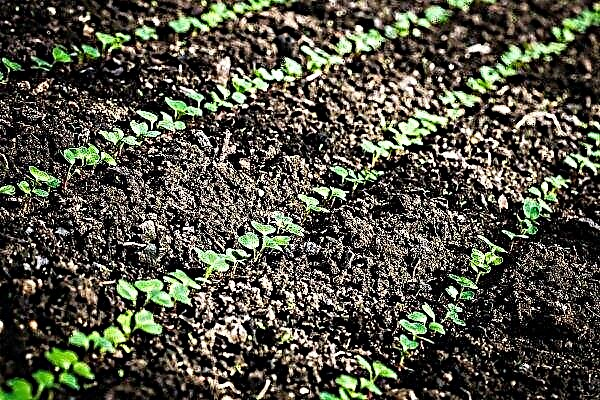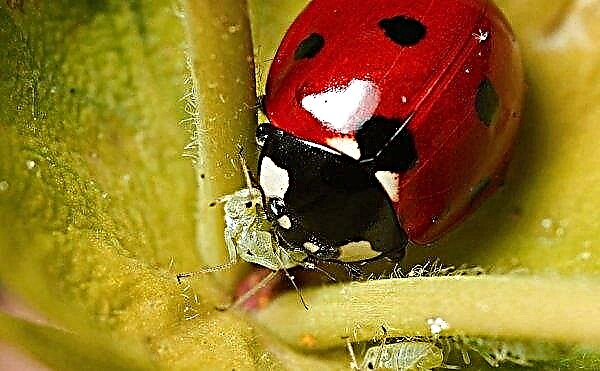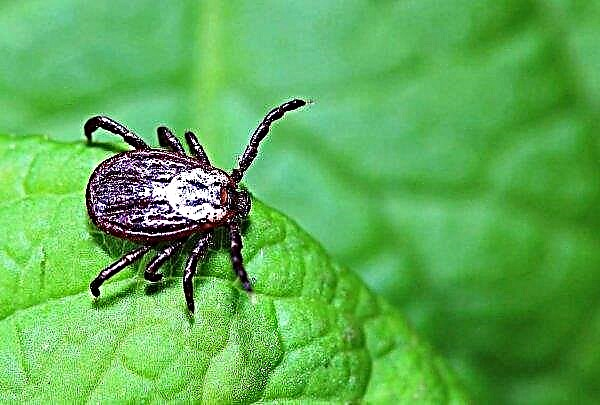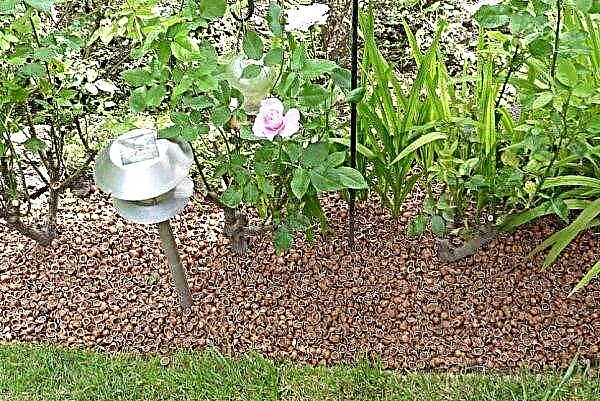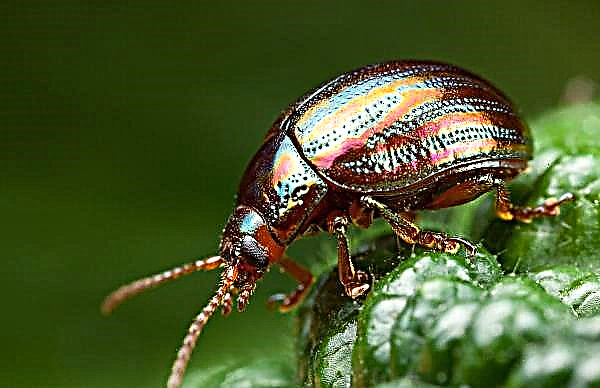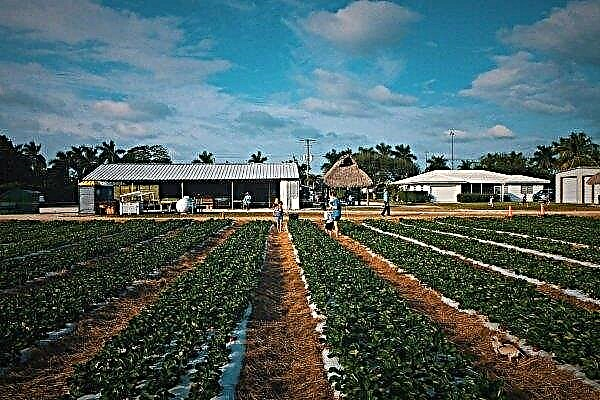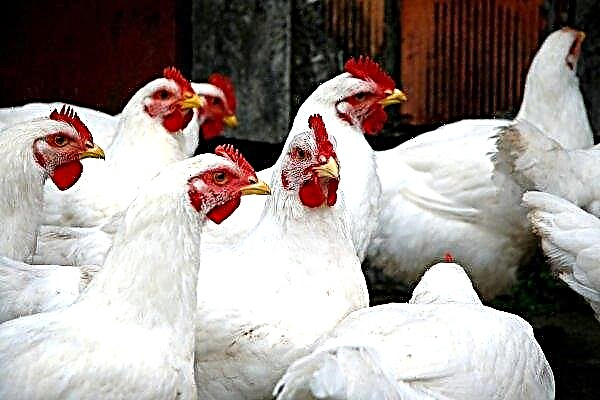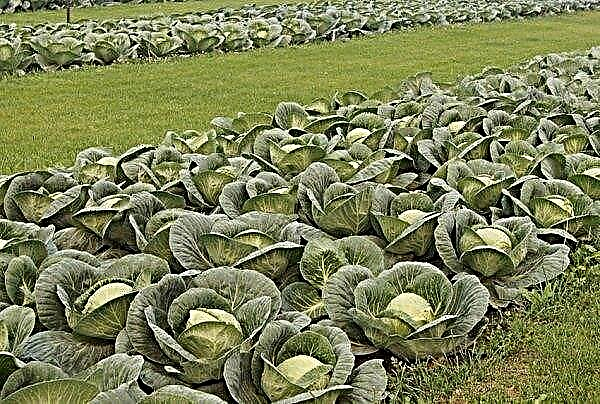Begonia Cleopatra is a subspecies of ordinary room begonia. A beautiful flower is a universal decoration (both a room and an outdoor interior). In this article, you will learn how to plant this flower and take care of it.
Houseplant Description
Begonia Cleopatra is a representative of the Begonia class. Of the many other subspecies, it stands out for its unusual leaves, their shape and color. The birthplace of this flower is considered by several countries at once - Africa, Asia and America.
Did you know? The entire Begonian family was named after the French Quartermaster of the Colonies and Navy, the Governor of the Republic of Haiti, Michel Begon.
Her appearance conquered many gardeners, so the flower is so often used for landscaping apartments, offices and educational institutions.
Below in the table you can familiarize yourself with the characteristics of the plant:
| Root system | Shaped Outlet |
| Stem | Thin, erect, reaches 50 cm in height |
| Leaf shape | Digital, leaves are pointed to the ends |
| Leaf color | The color is olive with white streaks. The reverse side is painted in burgundy. The leaves are covered with a white fluff. |
| Flower shape | Small flowers, 4 petals each |
| Flower color | Pinkish. The middle of the inflorescences is yellow |
During flowering, a high peduncle grows on the stem of the bush. In the lower part on it you can see small inflorescences of white and pale pink with a yellow center. Since Cleopatra begonia is a plant with flowers of two sexes, seed boxes grow in the place of inflorescences at the female flower.
Begonia Cleopatra – not only a beautiful, but also a healthy plant. It contains volatile, which fight against mold and fungal spores.The leaves are considered unique: they are two-tone, of an unusual maple-leaved, palmate-lobed form, with a fleecy coating that looks like white fluff.
Did you know? This flower has two other names - Begonia Boveri and "American Maple". The last name is given for the similarity of the shape of the leaves.
Basic landing rules
Before you start breeding this plant at home, you must carefully consider the recommendations for planting.
To plant Cleopatra begonia in a pot, follow these rules:
- Use drainage before pouring earth. Small stones, pebbles or shards will be suitable as drainage.
- After installing the drainage, pour one third of the earth and plant the plant. Sprinkle the remaining soil on top.
- Choose fertile and light soil for the bush.
- When you complete the planting process, be sure to water the flower.
Necessary conditions for planting and growing
Begonia is a compact plant for the home. It does not require much care, but for the best growth, you should adhere to the rules for growing a flower. Its life expectancy also depends on the conditions of planting and upkeep. Basic conditions for keeping begonias at home:
Basic conditions for keeping begonias at home:
- The most favorable season for planting – Spring. They plant a flower no earlier than mid-March, since a short daylight will not be able to provide it with the necessary substances for growth.
- Immediately after planting, it is necessary to actively fertilize the soil of the bush in order to achieve rapid growth.
- Make sure that the sprout is not in a draft.
- It is necessary to pre-select a suitable pot size for the plant and soil with peat microelements.
- This flower does not like when it is transferred to another place, so take care of its location immediately. Observe the light regime when growing begonias, do not put the pot in direct sunlight.
- The flower comes from the tropics, so it requires a wet microenvironment. But pour it with water is not worth it, as the roots can rot.
The main rule in the care of begonias – it is moderation.
Pot selection
Choose a plastic pot, not clay, as the roots, growing, can grow into a pot of natural material. It is better to choose a wide one, since the plant has rosette-like roots, which subsequently grow.
Priming
As soil, you can use special land from florist shops or dig up the soil yourself.
The soil must meet the following requirements:
- loose peaty soil;
- with low acidity.
 To prepare the land for planting Cleopatra begonia at home, you will need land from the forest, peat, sand with large particles, perlite and polystyrene crumb. Earth must be calcined in the oven, and then mixed with the rest of the soil.
To prepare the land for planting Cleopatra begonia at home, you will need land from the forest, peat, sand with large particles, perlite and polystyrene crumb. Earth must be calcined in the oven, and then mixed with the rest of the soil.Optimum temperature and humidity
The flower is quite resistant to short-term temperature jumps - high or low temperature. However, the temperature from + 18 ℃ to + 25 считается is considered most suitable for prolonged maintenance. The minimum temperature threshold that the plant can withstand is + 12 ℃ - + 14 ℃.
During the period of ejection of flowers, the plant will not withstand sudden changes in temperature. Such stress for a flower can be fraught with death. Therefore, the plant must be protected from drafts and put away from batteries away in the heating season.
Important! The humidity in the room where begonia is contained should be at least 60%.
Light mode
The flower should be comfortable, because proper lighting is another condition that the plant does not die. Begonia needs diffused natural light, however, the rays should not directly hit the flower. Perfectly develops in partial shade.
Ideal is the location on the west or east window. If you expose the pot to the south side, be sure to create a shadow. On the north side, it is better not to place the plant, since there will not be enough sun for growth.
Breeding methods
If you want to plant another begonia Cleopatra, you can propagate the plant at home.
There are several ways to propagate begonias for a new pot:
- foliar;
- seminal;
- cuttings.
These methods are described in more detail below.
Using leaves
When propagating by leaves, it is necessary to cut off the leaf with the petiole. Next, process with “Kornevin” the cut points. Drop the sheets into the ground. Add fertilizer to the pot once every two weeks.
Seeds
Reproduction by seeds occurs in the spring, from mid-March to May.
When propagated by seeds, the process is as follows:
- The soil must be loosened.
- Seeds are sown in the ground. When sowing, it is necessary to press the seed into the soil.
- The earth is moistened with a small amount of water. You can just spray it.
- Cover the pot with foil and leave in a warm place until the shoots sprout.
- Open the film gradually so that the sprouts acclimatize in dry room air.

Cuttings
To begin reproduction using cuttings, you will need to cut them from the plant. Put the cuttings in water and leave until the roots begin to grow. Sprouts with roots can be transplanted into a pot. Watch the plant take root in the ground, not forgetting to moderately water and fertilize the soil.
Home Care
Begonia Cleopatra is not very demanding in care, however, there are still certain rules for keeping the flower at home. The flower will not grow in cramped conditions, so it is recommended to remove excess plants from the windowsill, where there is a pot with Cleopatra.
Since it does not tolerate sudden changes in temperature, protect the plant from drafts, low temperature and dry air.
In the cold season, the flower dries up due to air overdried by artificial heating, so it is necessary to create constant, slightly moisturizing.
The humidification method in winter is as follows:
- Take a large pallet (larger than a begonia pot).
- Place the inverted tray from the plant in the first.
- In the inverted pan, set the begonia.
- Around the smaller pallet, put expanded clay.
- Moisturize it regularly with water. Evaporating liquid will give the humidity threshold that begonia requires.
 In summer, it is necessary to remove the flower from direct sunlight and not create a temperature above + 25 выше.
In summer, it is necessary to remove the flower from direct sunlight and not create a temperature above + 25 выше.Fertilizer
The main periods when the plant actively requires additional top dressing is spring and summer. Fertilizer is dissolved in water and laid in the ground. This procedure should be done once every two weeks.
As fertilizers, organic and mineral elements are used. They are part of special solutions for begonias, which you can buy in specialized stores for flower growers.
Important! AtFertilizers with an abundance of potassium contribute to the abundant flowering of begonias.
Watering Rules
Watering the plant needs moderate. In summer, Cleopatra is watered twice a week. In winter, moisten the soil once every 10 days. Thus, the roots will receive a sufficient amount of fluid and do not rot.
The flower is watered from above, carefully so as not to touch the leaves. Use soft water for watering. Place a pan under the pot so that excess water flows into it through the drain.
During hot summers, you can spray the air near the pot, but it is important not to wet the begonia leaves, as brown spots appear on the water from them. Begonia should not only be watered, but also wiped off dust with a soft brush or a special panicle.
Pruning
Pruning is done in spring or when transplanting into another pot. To do this, all long stems are cut. A well-sharpened garden knife is selected for trimming. Ordinary scissors are not suitable, as they damage the structure of the stem.
In order for the bush to be beautifully shaped, you need to rotate the plant during pruning.
Transfer
If the begonia has roots hanging from the drain holes, the grower needs to transplant the flower into a larger pot. It is best to move to another pot in spring.
Transplant Process:
- To transplant the bush, you need to get the plant out of the pot and clean the root system of excess land.
- Make a weak solution of potassium permanganate and wash the begonia roots in it.
- Rinse the roots with purified water, cut the decayed elements of the plant and let it dry.
- Now you can plant the flower in a new larger pot.
Important! Not recommended for transplantationbegonia more often than once a year.
The first weeks after transplantation requires abundant hydration.
Diseases and Pests
Flowers are sometimes susceptible to pests even in apartment conditions. Begonia Cleopatra is no exception.
Begonia diseases are divided into two categories:
- Fungal diseases.
- Pest damage.
Fungal
Gray rot - This is a fungal disease. It is expressed in pronounced brown spots on the stems of the plant, after which a gray fungal coating appears. The reason for its appearance is excessive soil moisture. As a method of combating gray rot, it is recommended to treat the plant with fungicides.
Fungal control chemicals are available at specialized stores.
Powdery mildew - damage to the stems and leaves of begonia spores of fungi. It looks like a grayish coating with the formation of drops of liquid on it. It can also pass to petioles with young shoots. It occurs due to violation of the temperature regime of the plant.
To save the bush from damage by a fungus, it is necessary to spray it with 1% solution of colloidal sulfur.
Pests
The most common pests of begonias include such parasites: a red spider mite and orange aphid.
These pests are populated on the back of its leaves and gradually destroy begonia. Pests occur when the bush is kept at an excessively high temperature and dryness. You can determine the disease in the presence of a small white web on begonia leaves.
The destruction of parasites is carried out using insecticides. For prevention, the treatment is repeated again after two weeks.

